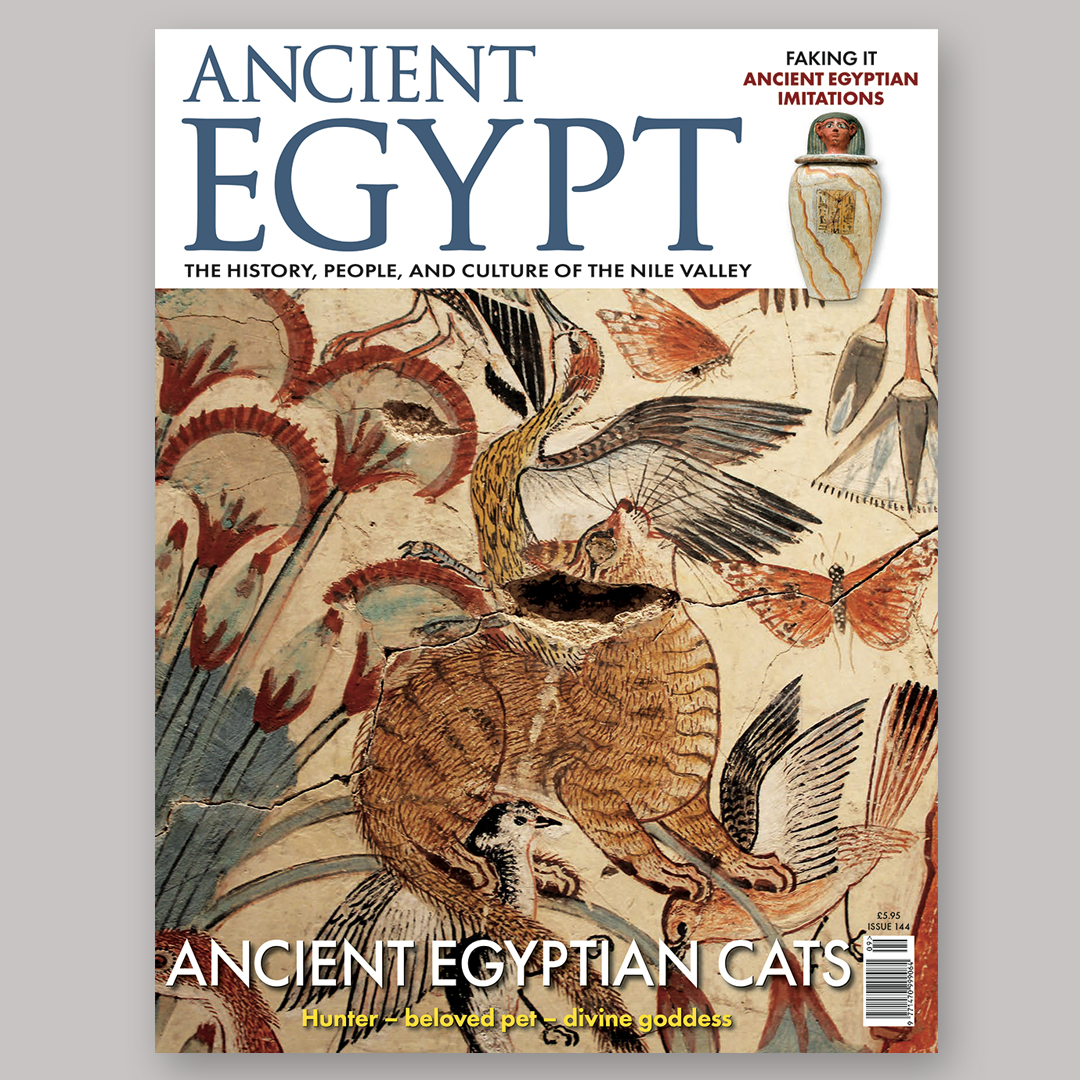AE 141 - Mar / Apr 2024
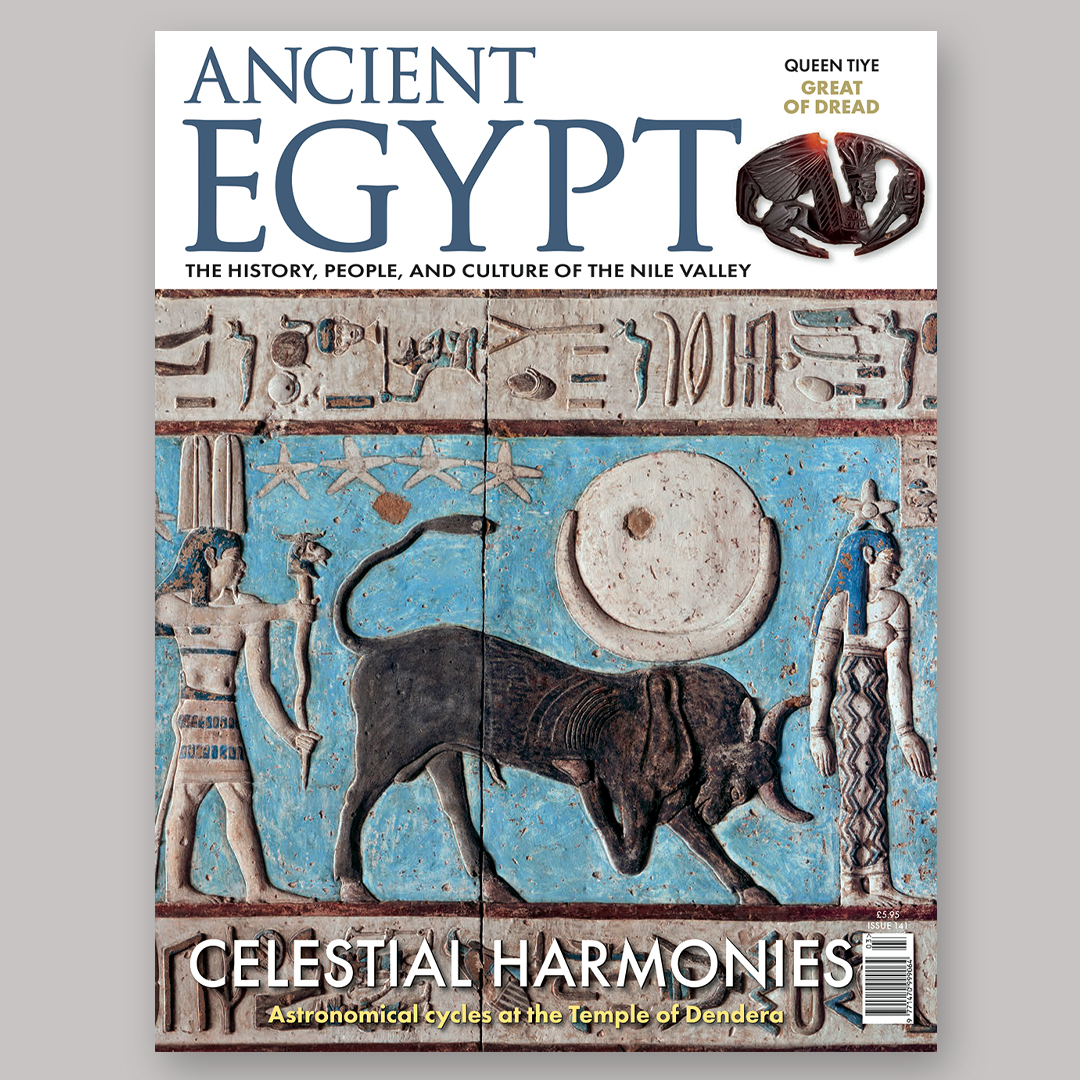
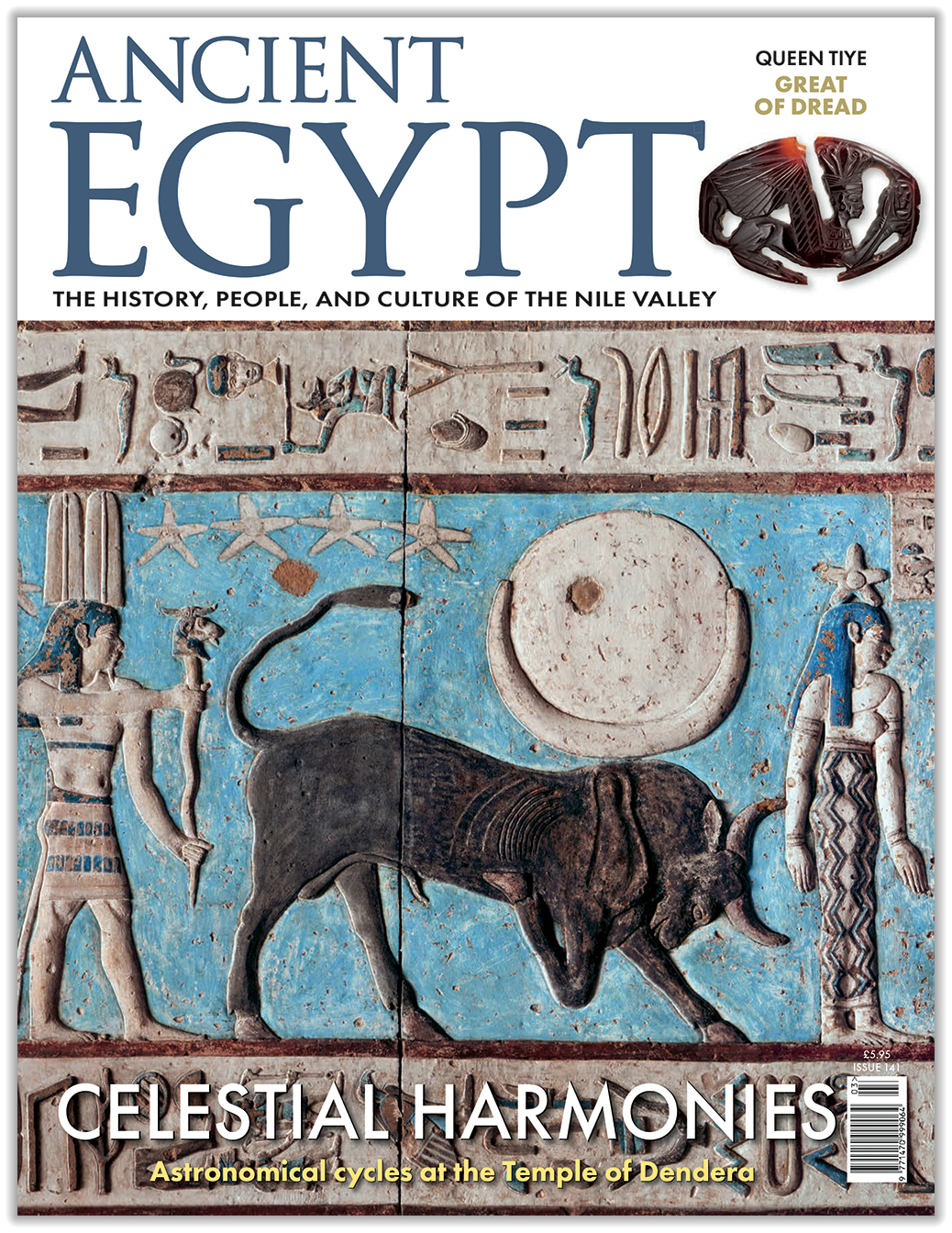
Not all the superstitions of the ancient world are so different from our own. The signs of the zodiac used in newspaper and magazine horoscopes were already familiar to ancient Egyptians. They can be seen in the scenes on the ceiling of the pronaos of the Temple of Hathor at Dendera, captured by José María Barrera in his remarkable photographs, one of which appears on the cover of this issue.
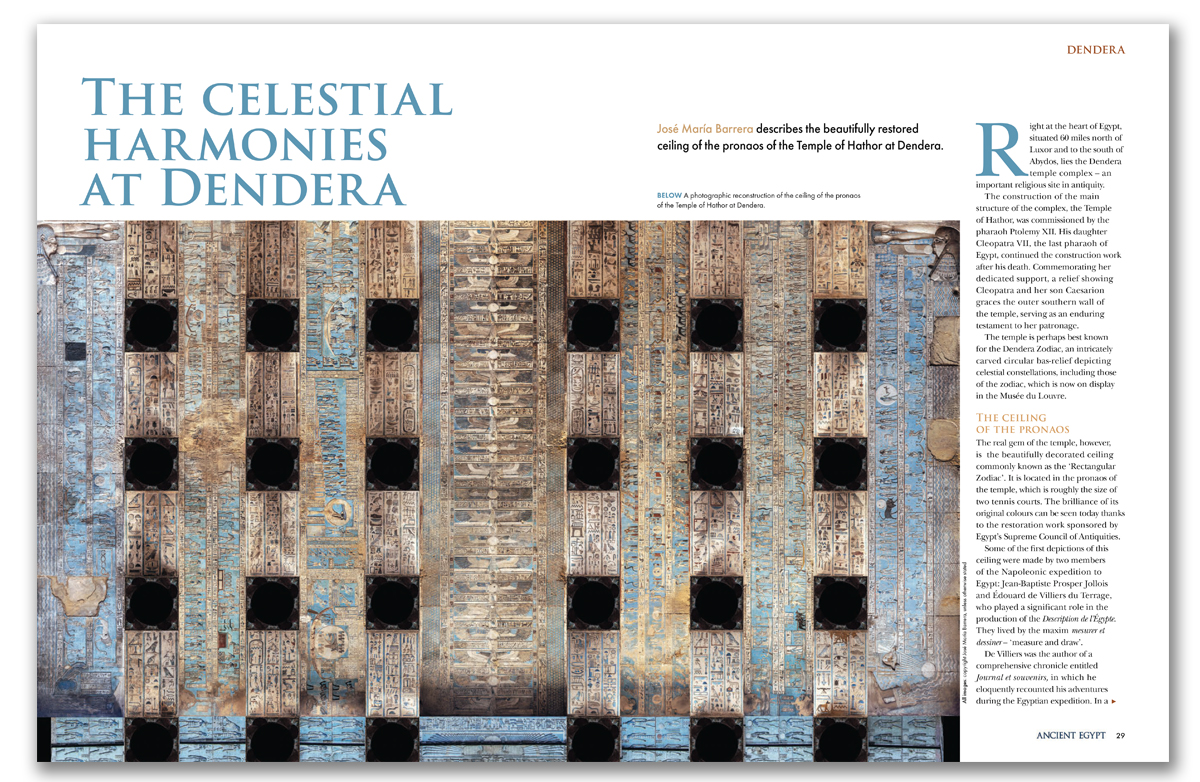
Although we must all be aware of how different our modern multicultural, diverse world is from that in which previous generations lived, it comes as a shock to read the quotations in Aidan Dodson’s article in this issue. Many respected Egyptologists, whose works are still studied as foundation texts, held racist views that are totally abhorrent. As such, their interpretation of the civilisation of ancient Nubia and its interaction with the neighbouring Egyptian civilisation is fatally flawed and needs to be re-evaluated, especially following more recent discoveries.
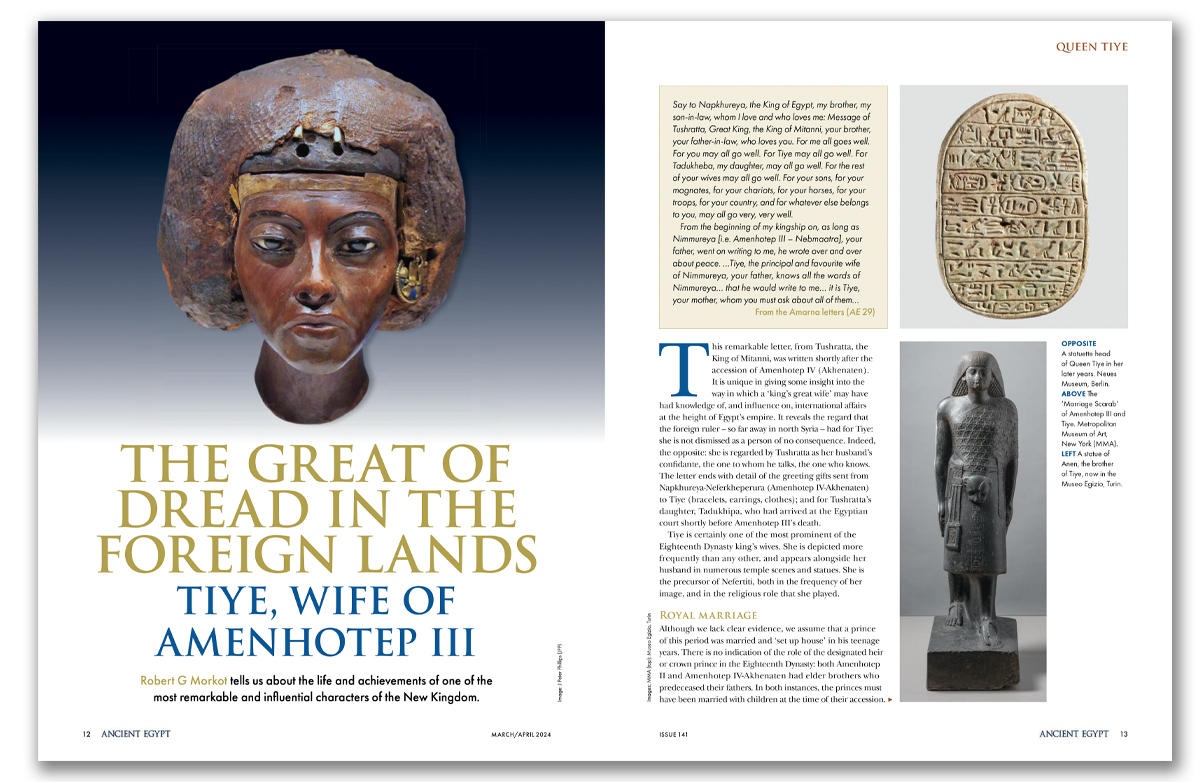
Ancient Nubia also features in Robert Morkot’s article about Tiye, Amenhotep III’s principal queen and chief adviser. If she resembled her small statuette now in the Neues Museum in Berlin, she was not a person to be crossed, and probably merited the epithet ‘great of dread of the foreign lands’.
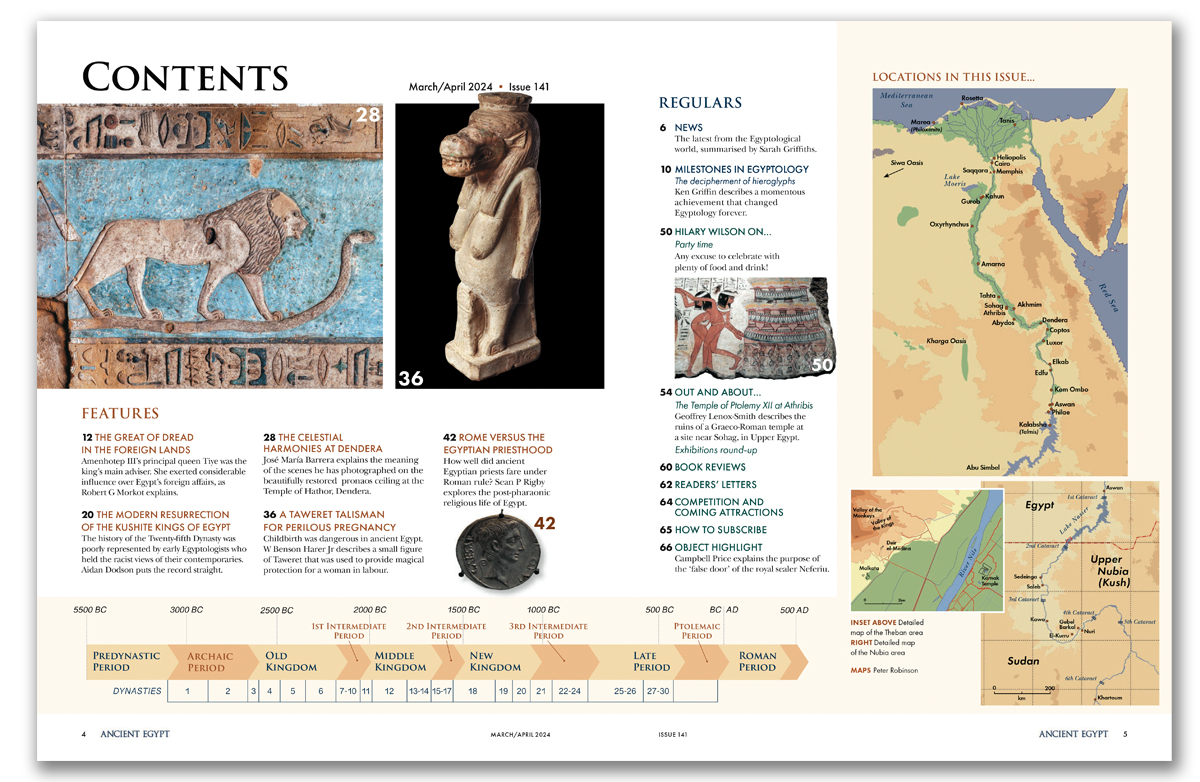
To alleviate the harshness of their lives, ancient Egyptians took every opportunity to have a party, as Hilary Wilson tells us, and believed in the power of magical talismans like the one described by W Benson Harer. Objects like it were in regular use for many centuries, and certainly under Roman rule, despite the reduction in power of the ancient Egyptian priesthood which is catalogued by Sean Rigby.


